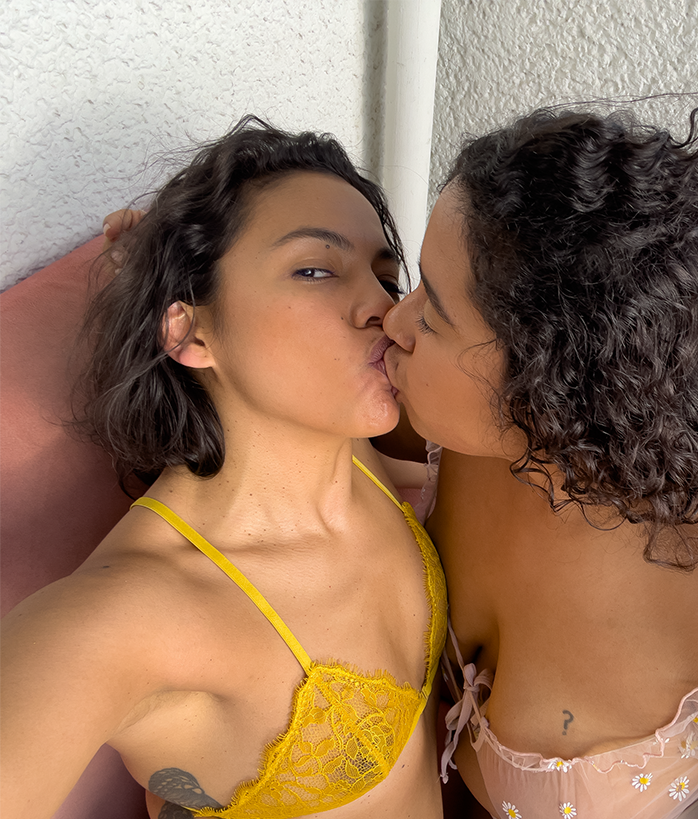
Een namiddag gevuld met presentaties
11.12.2022
Jester Artists
Een namiddag gevuld met presentaties
11.12.2022
Op 11 december vieren we het einde van Marie Zolamian’s tentoonstelling en het afsluiten van een belangrijk hoofdstuk voor onze organisatie. In de overgang naar volgend jaar komt er een einde aan het programma dat nog onder de twee organisaties FLACC en CIAP geïnitieerd werd. We zijn dankbaar voor de afgelopen jaren en voor de ervaringen en ontmoetingen die ze hebben gebracht. We kijken ernaar uit om 2023 te beginnen met nieuwe ideeën, energie en humor – in de stijl van Jester.
Enkele van onze kunstenaars delen op deze speciale dag elementen van hun onderzoek of project. Daarnaast houden we een afscheidsdrink met enkele vertrekkende collega’s Luuk Nouwen werkte tien jaar als artistiek leider bij FLACC en het laatste jaar als senior begeleider artistieke projecten bij Jester. Tine Deboelpaep werkte de afgelopen jaren als artistiek medewerker bij CIAP en Jester. Lisa Costantini werkte sinds twee jaar bij FLACC en Jester in de administratie en voor het keramiekatelier.
Programma:
- 14u00 – presentatie ‘The Forest Underground’ (geluidswerk) door
Miriam Sentler & Drake Stoughton (C-mine Design centrum, beneden*) - 15u00 – artist talk met Sarah van Sonsbeeck en Rana Hamadeh,
gemodereerd door Orlando Maaike Gouwenberg (kleine zaal) - 16u00 – rondleiding tentoonstelling Marie Zolamian &
afscheidsborrel (tentoonstellingsruimte) - 17u00 – filmvoorstelling Terms of Intimacy’ door Helen Dowling (werk in uitvoering) en gesprek tussen Helen Dowling en Jo-Lene Ong (kleine zaal)
- 18u00 – presentatie door Alain Nsenga (kleine zaal)
Het is de laatste dag van Marie Zolamian’s solotentoonstelling ‘Droomland’. Grijp deze kans om u voor een laatste keer te laten verwonderen door ‘Symbiocene’, een van haar grootste schilderijen tot nu toe: een indrukwekkend landschap dat zich moeiteloos uitstrekt over de breedte van de tentoonstellingsruimte. Het werk neemt je mee naar een kleurrijk, mysterieus universum dat voortkomt uit Zolamian’s oeuvre en reflecteert op de politieke beladenheid van het landschap in diens hedendaagse context.
Miriam Sentler presenteert haar nieuwe audio-installatie ‘The Forest Underground’, ontwikkeld met componist Drake Stoughton. Het duo heeft zich laten inspireren door de geluiden en de akoestiek van de kolenmijnen, waar de mijnwerkers dagelijks begeleid werden door de stemmen van vogels, krekels en bomen. In hun stuk componeren Sentler en Stoughton een haast fantasievolle, transhistorische soundscape van dat ‘ondergrondse bos’. Het werk gaat in première op 11/12, gevolgd door een Q&A met de kunstenaars. U kunt hier meer lezen over het project.
Helen Dowling geeft ons een inkijk in haar aankomende film en haar lopende onderzoek dat ze in 2020 met de steun van Sint-Lucas Antwerpen opstartte en tijdens haar onderzoek bij Jester verderzette. ‘Terms of Intimacy’ gaat in op het beeld van seksualiteit en vrouwelijkheid in de mainstream pornografie door strategieën te ontwikkelen om het acteerwerk en de productiemiddelen van op maat gemaakte pornografie toe te passen. Als onderdeel van het onderzoek werkte Dowling aan een nieuwe film, in samenwerking met Custom Performers. Fragmenten van het werk worden vertoond, gevolgd door een gesprek met de kunstenaar. Meer over het project kunt u hier/onder lezen.
Tijdens haar residentie bij Jester zette Sarah van Sonsbeeck haar onderzoek naar ‘immateriële architectuur’ voort – dingen die onze leefomgeving beïnvloeden en die misschien niet direct tastbaar zijn of aan onze controle ontsnappen – zo vormden molshopen de inspiratie voor haar meest recente serie keramische en bronzen werken. Veel van de interdisciplinaire projecten van Rana Hamadeh stellen de autoriteit van de historische stem ter discussie en creëren zichtbaarheid rondom uitgewiste of niet vastgelegde stemmen. In theatervoorstellingen, geluidswerken, teksten of games creëert ze ruimte voor een discursieve benadering van het onderwerp. Bij Jester testte ze de mogelijkheden om gamedesigner en keramist te zijn. We organiseren een gesprek tussen de twee kunstenaars rond hun praktijk, gemodereerd door Jester’s artistiek directeur Orlando Maaike Gouwenberg.
Alain Nsenga komt uit een mijnwerkersfamilie. Dit persoonlijke verhaal voedde zijn fascinatie voor de geschiedenis en de impact van mijnbouw over de hele wereld. Voor zijn onderzoek interviewde hij mijnwerkers uit Congo en Limburg en ontdekte hij verbanden tussen hun verhalen over migratie, zware arbeid en ondergrondse vriendschappen. Op de 11e december presenteert hij delen van het onderzoek dat eerder te zien was in Z33 in het kader van On Trade Off – Charging Myths.
“The Forest Underground” van Miriam Sentler en Drake Stoughton kwam tot stand met steun van Jester, Emile van Dorenmuseum en O&O subsidie van CBK Rotterdam.
Related Projects
Droomland
10.09–11.12.2022

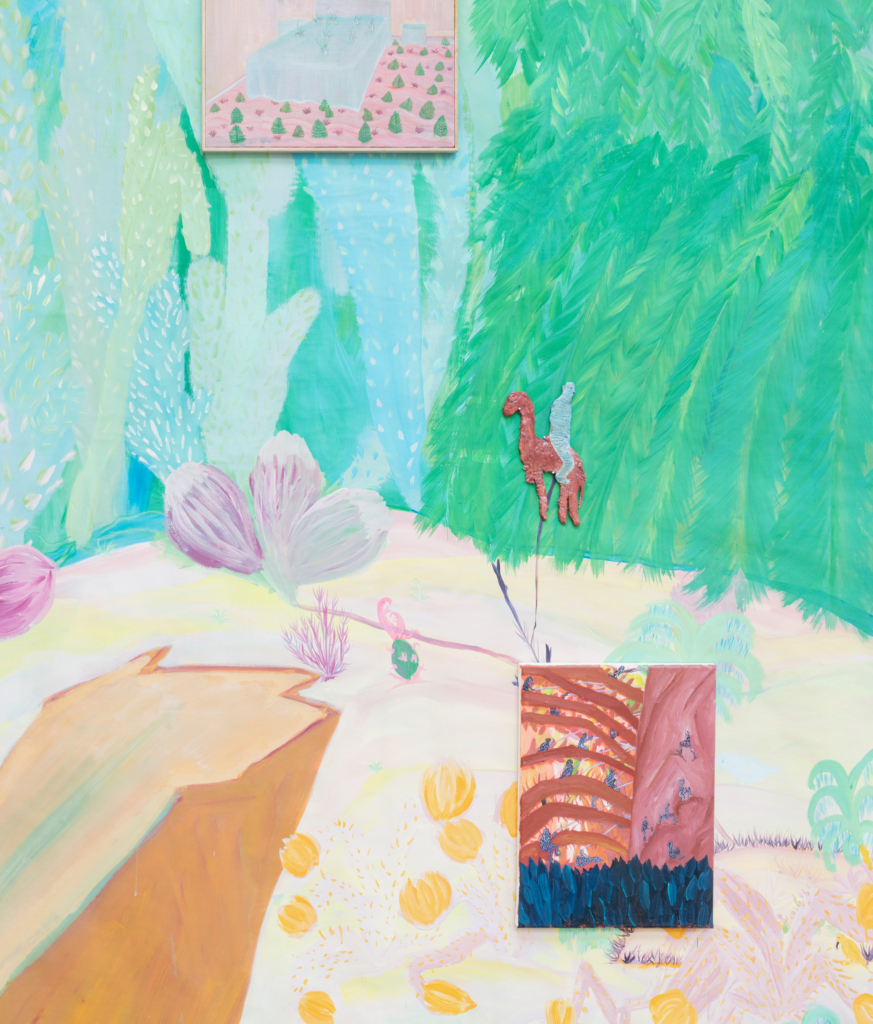
Kinderkunstendag
20.11.2022
Workshop Marie Zolamian
Kinderkunstendag
20.11.2022
Op kinderkunstendag organiseren we een bijzondere workshop geïnspireerd op het werk van beeldend kunstenaar Marie Zolamian, dit ter gelegenheid van haar tentoonstelling ‘Droomland’ die momenteel te bezichtigen is in Jester. Het monumentale schilderij ‘Symbiosene’ is het pronkstuk van de tentoonstelling. In dit schilderij van wel 14 m lang, worden afzonderlijke, kleinere kunstwerken geïntegreerd en opgenomen in het kleurrijke tafereel.
Spelenderwijs leren de kinderen het wonderlijke universum van Marie Zolamian ontdekken, om vervolgens zelf aan de slag te gaan met allerhande teken- en schildersmaterialen. We maken afzonderlijke werkjes die we vervolgens samenvoegen tot één groot geheel, net als het werk van Marie!
PRAKTISCHE INFORMATIE
De workshop vindt plaats op zondag 20 november in Jester’s tentoonstellingsruimte van 14:00 tot 17:00 uur. Je vindt ons op de 1ste verdieping van het C-mine energiegebouw. Kinderen kunnen doorlopend aan de slag om hun werken te creëren onder het toeziend oog van onze begeleider(s). De workshop is ontworpen en wordt begeleid door kunstenaar Fee Veraghtert. Om 14:00, 15:00 en 16:00 uur voorziet zij een introductie over het werk van Marie Zolamian en beschikbare materialen.
Deelname aan de workshop is gratis. Let op, het kan er enthousiast aan toe gaan met de stiften of verf! Breng zeker een short of een oud t-shirt mee om jullie mooie kleren te beschermen. Nog vragen? Mail naar tine@jester.be



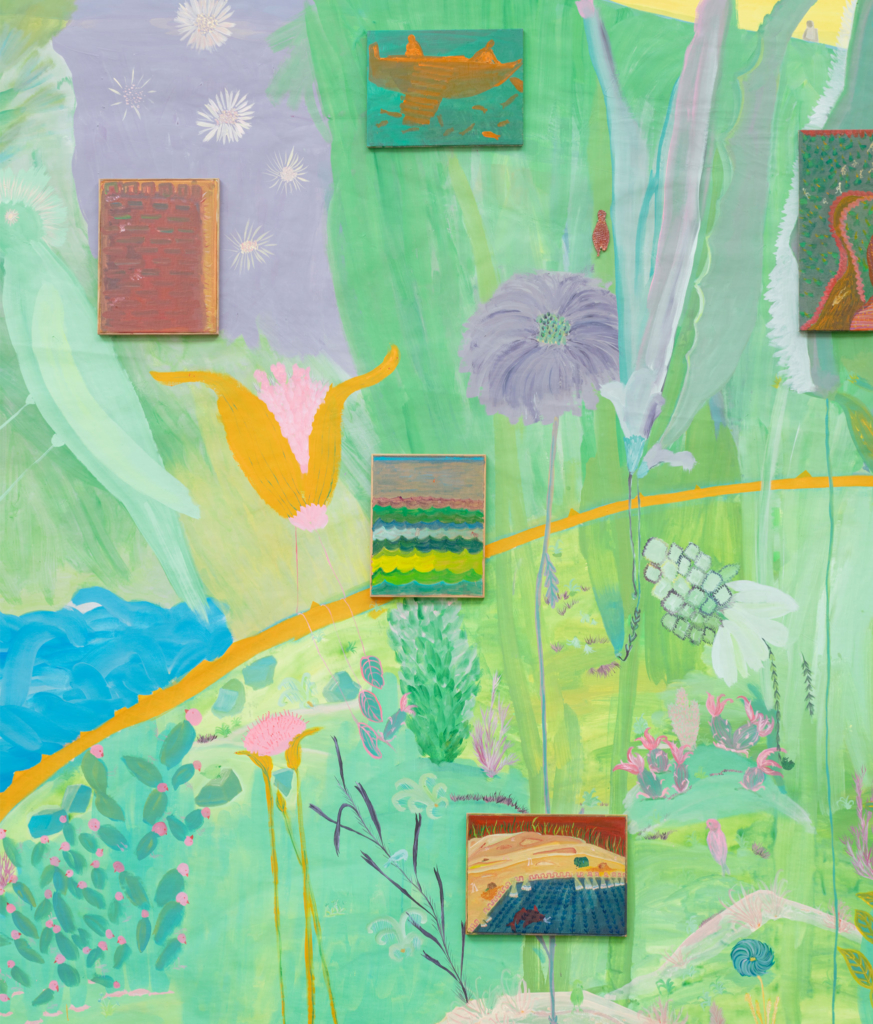
Kunstuitstap Marie Zolamian
28.10.2022
‘Droomland’, Jester & 'Welkom - Bienvenue - Welcome - Willkommen', KMSKA
Kunstuitstap Marie Zolamian
28.10.2022
Marie Zolamian – ‘Symbiocene’, 2022 © foto: Michiel De Cleene
Vrijdag 28 oktober staat voor ons in teken van de artistieke praktijk van Marie Zolamian. We verdiepen ons in haar werk via ‘Symbiocene’ en ‘Welkom – Bienvenue – Welcome – Willkommen’, de twee monumentale werken die de Luikse kunstenares Marie Zolamian recent creëerde. We brengen kunstliefhebbers vanuit Luik en Limburg samen om in Genk en Antwerpen voor een bezoek aan beide kunstwerken. Ga jij ook met ons mee?
Het schilderij ‘Symbiocene’ is het pronkstuk van Marie’s solotentoonstelling ‘Droomland’ in Jester. Het schilderij is zo groot dat het bijna de hele breedte van de tentoonstellingsruimte inneemt. In het werk floreren de natuur en het landschap, die op hun beurt politieke urgenties en kunsthistorische verwijzingen bevatten. Samen met Marie Zolamian duiken we in haar mysterieuze beeldtaal en ontrafelen we de verbanden en narratieven die het werk herbergt.
Tijdens het openingsweekend van het KMSKA op 24 en 25 september, was Zolamians mozaïek ‘Welkom – Bienvenue – Welcome – Willkommen’, een werk dat ze in opdracht van het museum maakte voor het peristilium, niet publiek toegankelijk omwille van een podium dat de doorgang barricadeerde. De kunstenares stemde met de plaatsing van het podium in, mits een officiële inhuldiging voor alle museumcommissies die later zou volgen. Ondertussen werd bekend dat het werk ‘Mimesis’ van Lili Dujourie op 28 oktober wordt ingehuldigd voor het grote publiek, helaas kreeg Zolamian van het museum te horen dat haar mozaïek geen deel uit maakt van de festiviteiten.
In afwachting op een officiële inhuldiging door het KMSKA, nodigen wij u alvast uit op de exclusieve inhuldiging van ‘Welkom – Bienvenue – Welcome – Willkommen’. Voor de creatie van haar werk dook Marie in de archieven en de collectie van het museum, tijdens deze inhuldiging voorziet de kunstenares uitgebreide toelichting van haar werk. Daarna kunnen jullie vrij het museum ontdekken en de gepresenteerde collectiestukken verspreid over zeven eeuwen heen bekijken. Let op het KMSKA sluit om 17:00 uur! Voor degene die genoeg kunst hebben gezien die dag, zoeken we een naburig gelegen, gezellig cafeetje om na te praten. ‘s Avonds verzamelen we voor de terugreis met afstaphaltes in Genk, Hasselt en Luik.
PROGRAMMA
11:00 Vertrek Station Luik Guillemins, parking 2
11:40 Vertrek Hasselt parking achterkant CCHA
12:00 Aankomst Jester, Genk
- Introductie: door Artistiek Directeur Orlando Maaike Gouwenberg
- Toelichting ‘Droomland’ Marie Zolamian
- Wij voorzien een sandwich lunch + koffie/thee/water tijdens de middagpauze
*tip: nog geen honger? Breng gerust jouw lunchbox mee voor een hongertje later.
13:00 Vertrek vanuit C-mine parking 2 naar Antwerpen
14:00 Aankomst KMSKA (bij drukte op de weg rond 14:30)
- Inhuldiging Mozaïek door Marie Zolamian en welkomstwoord
- Aansluitend vrij bezoek KMSKA & ‘Mimesis’ Lili Dujourie
of een gezellig cafébezoek. Let op het KMSKA sluit om 17:00 uur!
17:30 Samenkomst voor terugreis vanuit Antwerpen
- Aankomst Genk: 18:30
- Aankomst Hasselt: 19:00
- Aankomst Luik: 19:30
- Marie Zolamian ‘Welkom – Bienvenue -Welcome – Willkommen’, 2022 © KMSKA & Marie Zolamian
PRAKTISCHE INFORMATIE
Tarieven
- 45 euro leden: enkel bezoek mozaïek
- 65 euro leden: incl. toegangsticket KMSKA-collectie
- 55 euro niet-leden: enkel bezoek mozaïek
- 75 euro niet-leden: incl. toegangsticket KMSKA-collectie
*prijs incl. busreis, koffie of thee en sandwichlunch. Afhankelijk van het gekozen tarief geeft u aan of u graag een ticket voor de KMSKA-collectie wilt of niet. Wij maken voor u de reservatie. Laat ons weten als u een museumpas heeft, wij berekenen uw korting.
Opgelet: bij minder dan 10 deelnemers uit Luik wordt deze wordt de opstaphalte geannuleerd en het inschrijvingsgeld teruggestort. Voor de aanvang van de uitstap ontvangen de ingeschreven deelnemers nog meer praktische informatie via e-mail. Heb je tussendoor nog vragen, dan kan je altijd bij ons terecht! Vergeet jullie lidmaatschap niet te vernieuwen indien nodig. Dit kan via deze link of via info@jester.be. Meer info over onze lidmaatschappen vindt je hier terug
Marie Zolamian – ‘Symbiocene'(detail), 2022 © foto: Michiel De Cleene
HOE RESERVEREN?
Stuur ons voor 25 oktober een mailtje met onderwerp ‘Kunst uitstap KMSKA’ naar info@jester.be
- het aantal deelnemers en ieders namen
- contactgegevens
- Of u al dan niet over een museum pas beschikt
- betalingsgegevens en of je wel of niet het KMSKA bezoekt (vergeet niet te melden indien je een museum pas hebt)
- Opstaphalte
- Eventuele allergieën of type dieet waar we rekening mee kunnen houden
Je inschrijving is compleet na overschrijving van het inschrijvingsgeld naar: BE44 1324 3606 3945
Related Projects
Droomland
10.09–11.12.2022






Exploring the underground forest
Interview
Exploring the underground forest
a conversation with Miriam Sentler and Kristof Reulens
Dutch artist Miriam Sentler is one of the residents at Jester in 2022. In conversation with Kristof Reulens, the coordinator for arts and heritage at the City of Genk, and Jester’s curator Alicja Melzacka, she is sharing her research and looking back at her three-week long stay at the Emile van Dorenmuseum.
Alicja Melzacka:
Miriam, as an artist and researcher, you’ve been dealing with fossil fuel landscapes for a while. How did your previous experience translate into the context of Genk? What astonished you?
Miriam Sentler:
When I came to Genk I had certain expectations regarding mining sites. For several years, I have been researching the lignite industry in North-Rhine Westphali, where the local forest is disappearing, ecosystems are being excavated, birds and people are being driven out of the landscape. As it turned out, Genk is an entirely different context. I was confronted with the fact that there is so much nature around in the first place. It has to do with the different ways in which lignite and black coal are extracted – the first one requires excavation of large pieces of landscape, so-called ‘strip mining’, while the latter is found deep underground. So, I was coming from a barren landscape in Germany to a rich, ‘new’ landscape in Genk.
During my stay here, I soon discovered a very different kind of relationship with the landscape. I became interested in the fact that a lot of what’s now considered ‘nature’ has emerged because of the industry. In Genk, we are historically talking about a heath landscape, where there weren’t many trees to begin with – most of them were planted for industrial purposes. The so-called ‘mine arboretum’ is one example of such industrialisation of nature, but also the forest management by the wood industry, or the planting of trees to prevent the sand drifts, which was practised already in the mediaeval ages. In fact, humans have always shaped nature around here.
AM
In this new context, what triggered your interest the most? Have you found a new line of inquiry while working in Genk?
MS
I was most interested in the material agency of nature in relation to the industry – how, on the one hand, nature was exploited by the mining industry and, on the other hand, how plants and animals were assigned specific agency by the workers. It was something that occurred to me when I was looking into different linguistic expressions, for example: ‘de kanarie in de koolmijn’ (the canary in the coal mine) and ‘grenen spreekt voordat het breekt’ (pine speaks before it breaks). They convey an interesting sense of listening to that nature, and at the same time, industrialising and deploying it in a specific way, also in order to save lives. That’s what was perhaps the most striking to me, the agency that this exploitative industry itself assigned to nature. Then, the second part was, of course, the history of landscape painting in Genk, which I got to know during my stay at the Emile Van Dorenmuseum.
AM
You had an opportunity to live in the museum’s historical building, which was built by landscape painter Emile van Doren, one of the founders of the artists’ colony in Genk at the turn of the 18th and 19th centuries. What did you find the most interesting about this part of Genk’s history?
MS
One thing was certainly the idea of going back in time; the attitude of a painter going into the landscape and not drawing the emerging industry but looking away, towards the heath. It made me think of this sense of deep time one might experience in the middle of the ocean, where nothing really changes. I was fascinated in particular by the painting of a carbonised forest by Jan Habex, which is taking this notion of going back in time even further.
Kristof Reulens
I also find this painting fascinating. It was commissioned by the mine of Waterschei. Why did the coal mine industry find it necessary to commission a monumental painting showing the landscape before human interference? It might be seen as a kind of scientific illustration of the geological period from which the resource originated, but still, it is quite a paradoxical gesture.
MS
Another thing which I found fascinating about Genk, and which also relates to the history of a specific painting, was the healing power of this landscape. The birch trees in Genk were utilised in different ways: firstly, by the wood and coal industries, secondly, by the landscape painters, and thirdly, for medicinal purposes. Priest and physicist Sebastian Kneipp claimed that the birch forest would heal tuberculosis, and in… a sanatorium was built in a nearby Bokrijk. This enormous agency of the trees is something I found really stimulating.
This medicinal application of nature is portrayed in that painting of François Halkett from 1885, entitled Dans la sapinière. The painting explores the notion of disappearance – someone enters the forest, stays there for a while, and then disappears completely. Only the clothes are left behind.
KR
This painting is shrouded in mystery. We only know a story as put forward in an article in De Groene Amsterdamer, dated 1885, one year after the painting had been completed. The painting represents a woman suffering from tuberculosis, a lung disease strongly linked to the industrial revolution. She visited Genk because it was believed that the wind blowing across the heather grounds and in the pine forests was cleansing. This scene is depicted in the first panel, where you can see the sick woman accompanied by her sister. In the third panel, you can see the pine forest which is a little bit taller, indicating the passage of time. Amongst the trees, there is a black veil with flowers. The story in De Groene Amsterdammer tells us that the woman did not survive the treatment. It has not been confirmed, but my view is that it’s a personal history of the painter, François Halkett.
François Halkett, In het Dennenbos – Dans la Sapinière, 1884, sketch in the collection of the Emile van Dorenmuseum
MS
In this story of trying to recuperate, to revive one’s body, I can see a kind of parallel with the state of the landscape itself. Compared to Germany’s disappearing forest, there is a ‘resurrecting’ forest in Genk, one that is still developing and still growing. This idea of resurrection is also represented by the so-called ‘canary resurrector’, which I came across during my research. It was a device used in the mining industry to revive birds which started to show signs of carbon monoxide poisoning.
These are different kinds of parallels, which I found in Genk, and which I want to work on further, primarily through sound. I think that sound is a suitable medium to map all this knowledge because sound specifically was utilised by the industry. Think of the crackling of wood, functioning as a warning against a mineshaft collapsing, and the singing of a canary, or rather its absence, when the carbon monoxide level would become dangerously high. This is precisely the idea of sentinel species, which can sense things humans cannot. I would like to look into this further with composer Drake Stoughton, to think about it in terms of sound and music history, where ‘resurrection’ is, of course, a common trope.
AM
Miriam, you worked with Drake before, on your sound piece ‘The Chase’, which you presented in Genk last year, during a lecture performance.
MS
‘The Chase’ emerged from my research into the lignite industry in Germany, and it was inspired by my family history. My great-grandfather was a miner coming from this area, and my grandfather always lamented the fact that his birthplace was excavated by the industry and turned into a lake. Starting from the lake, I researched the landscape and eventually ended up at Hambacher Forest, which is currently being excavated, amidst the protests of treetop activists.
In the mediaeval ages, Hambacher Forest used to be called ‘Burgewald’, which means the commons’ forest. There were certain rules of how to interact with this forest. The citizens were allowed to gather wood and berries, but they were not allowed to cut any trees or harm the forest. When the industrialists arrived there, about 200 years ago, they first started by rebranding the forest. Since then, it was no longer the commons’ forest but Hambacher Forest, related to the Hambacher mine. And so, the extraction could start. What remains of the forest today is only 10% of its original size.
‘The Chase’ was an attempt to archive the bird species of the disappearing forest because many people who were resettled from that area told us that what they missed the most were bird songs. We recorded the songs and transcribed them into a score. The resulting audio piece shows the impossibility of truly recording nature. With each line, you first hear the bird singing, followed by the musician trying to mimic the sound on the flute. But he can never actually ‘capture’ the bird, as if it was too smart for him.
AM
Could you tell us something more about the relationship between that project and your present research in Genk? You have been making on-site recordings, and you are going to work with Drake again – what approach do you assume this time?
MS
The new project is of course different, as it departs from a different context – while in Hambacher Forest things were disappearing, in Genk, they are emerging. That’s why, with Drake, we started talking about this resurrection in relation to music tropes. How were the religious chants written, where were they performed, and what was their social role? This is something still very apparent if you look at the effort put into constructing mine chapels, which in the end, also conveyed the power of the industry. Drake was also directly intrigued by the canary resurrector as a container for something, maybe even sound. We found it very particular that while the crackling of the pines served as a warning sign, in the case of the canary, it was the absence of sound that indicated the danger. To think about the resurrection is to think about death and life, about the absence of sound and the presence of sound.
KR
Now that I hear this story about the disappearance of the forest, I see some quite interesting parallels with Genk. The idea of a loss or a gain is different, and yet the same – I’ll try to explain why. You said that Hambacher Forest used to belong to the community. Also the heather grounds in Genk were called ‘gemene gronden’ (common lands). Everybody had the right to the land and could let their sheep graze on it. When in the 19th century, the government introduced the law of the savage lands, promoting the cultivation of pine forests – one of the few crops that could survive on the sandy soil – the locals protested and peasants went on strike because they were losing their communal grounds. It is a pretty similar development to the one you described in Hambacher Forest, with the industry taking over a common resource. So what you see now as a resurrection would not be perceived this way by the 19th-century farmers. They saw the coming of the pine forest as the death of their way of living. Who has the right to the landscape? How do these ideals change with time? There is always a communal idea behind, I think, being ‘the people’ vs ‘the industry, but it is always in movement. It’s a cycle, where you will always have the resurrection and the disappearance over and over again.
AM
Raymond Williams uses the metaphor of an elevator to illustrate this relativism of the notion of ‘nature’. He was referring specifically to the evolution of pastoral writing, but this metaphor might as well be adapted to other contexts. He said that no matter how far back we go in our analysis of the notion of nature (and its representations in literature, art, etc.), there has always been lamenting about the loss of a more ‘real’, more ‘natural’ way of living. He compares this to a moving elevator, which keeps going further backwards, constantly looking for a more utopian, arcadian vision of nature. This image of an elevator resonated strongly with me because it is rather unusual to spatialise the temporal dimension along the vertical axis. And this image of an elevator going underground, deep into geological time, resonates also with the context of the mine.
KR
A good example of this relativism is, for instance, the lake district of Genk – De Maten. Recently, many trees have been cut down there, which provoked a large protest. But that decision was actually taken by Natuurpunt, the keepers of this landscape, to preserve that landscape in its desired state. To protect this landscape, you have to keep it quite barren because the trees with their roots have an impact on the slope and the cascades and can disrupt the ecological system that developed in De Maten over the centuries. What makes it even more complex is the fact that there is nothing ‘natural’ about the system of lakes and cascades that this area is known for – it was man-made in the mediaeval ages to farm fish. But, of course, when the landscape painters arrived in Genk, they saw this large lake district and thought that it was ready to be painted. The reflection of light in the water was a big topic, especially in the 19th century. Historically, these aesthetic considerations also played a role in nature preservation. I know that when it was first spoken about founding a nature reserve in Genk, in the years before the First World War, there were several arguments put on the table – biodiversity was one, but the aesthetic view of the landscape was another one.
So again, we have clashing visions on what the ‘natural’ state is, and what is worth preserving. On top of that, we have different economic agendas, of how to use the land to one’s benefit, whether it’s for farming, wood or coal industry, agriculture, tourism… I’m pretty sure that Emile Van Doren or Armand Maclot would be behind the Natuurpunt when they were opening the landscape up again and cutting down the trees. But maybe from an ecological point of view, leaving the trees to grow and create a new biodiverse ecosystem might be an argument of today, so which argument do you choose?
MS
So, maybe there is no original landscape in Genk?
KR
Maybe that’s the landscape that Jan Habex painted? I don’t know.
KR
I want to still return to the idea of the sound underground and share an anecdote about it. When the coal mines started to be active in this region, after the First World War, wood was no longer used to reinforce the mineshafts, it was substituted by steel support. I think that the mine arboretum, which was cultivated as a kind of testing ground for material research, quickly became obsolete. Of course, wood was still used for other than structural purposes in the mines. I also think that wood would have lost its signalling function because, in the 20th century, conveyor belts were introduced underground, and there was this constant noise which was absent from the 19th-century mines. The same goes for the canaries, which eventually were substituted by special mine lamps.
However, what I always found interesting were the stories about another kind of sound, told by the miners from this region. They said that in the mineshafts, you could hear the loud chirping of the crickets, which were transported there with the wood. This was the only natural sound they could hear…
MS
That’s fascinating. It is as if different times and stages of the industry had different natural sounds accompanying them. I think that there is a potential in bringing these various temporalities and sounds together in a hybrid soundscape: the geological time, the historical time, the idealised time; the trees, the birds, and the crickets. It’s quite evocative to imagine how they populate this forest, deep underground…
This project has been realised in collaboration with Emile van Dorenmuseum, with the kind support of the city of Genk, the Flemish Community, O&O Subsidy/ CBK Rotterdam, and the members of Jester.
Related Projects
The Chase
14.08.2021

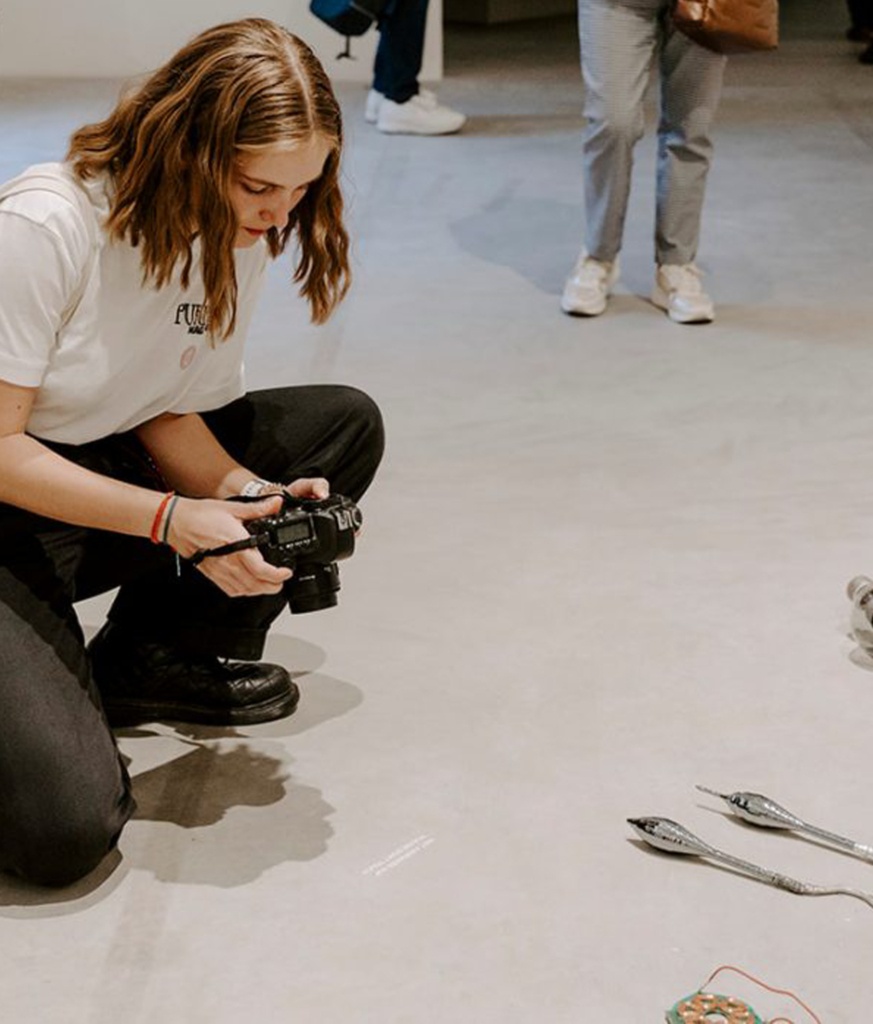
Hoe fotografeer ik mijn werk met camera of smartphone?
24.09.2022
Workshop
Hoe fotografeer ik mijn werk met camera of smartphone?
24.09.2022
Heb je nood aan goede foto’s van je beeldend werk voor je website, portfolio en onder andere sociale media? Wil je ze graag zelf maken, maar je mist wat knowhow? Deze praktische workshop leert je met een eenvoudig toestel sterke reproductiefoto’s te maken, ook al heb je geen of weinig ervaring met fotograferen.
Fotograaf en docent Kristof Vrancken begeleidt de workshop. Hij gaat met jullie aan de slag in verschillende testopstellingen zoals een atelier en een expositieruimte. Je leert met een spiegelreflex, compact digitaal toestel of zelfs je smartphone reproductiefoto’s maken.
Praktische informatie:
De workshop vindt plaats op zaterdag 24 september, van 10:00 tot 16:00. Je vindt ons terug op het volgende adres: Casino Modern, André Dumonlaan 2, 3600. De workshop is gratis, maar het aantal plaatsen is beperkt tot 8 deelnemers.
Inschrijven is verplicht (dit kan tot ten laatste maandag 12 september) in via deze link. Wij bevestigen uiterlijk donderdag 15 september je deelname.
Meer workshops volgen?
VONK, Z33 en Jester (het voormalige CIAP/FLACC) slaan de handen in elkaar en organiseren een reeks workshops rond de praktijk van de beeldende kunstenaar. De workshops helpen je de eerste stappen zetten en bieden je handige tools aan om nadien zelf aan de slag te gaan.
De workshops zijn bedoeld voor professionele, semi-professionele en/of startende hedendaagse kunstenaars met een Limburgse link die een professionele kunstopleiding hebben gevolgd. De workshops worden in het Nederlands gegeven, zijn gratis, het aantal plaatsen is beperkt.
Hou onze website in de gaten voor meer informatie over onderstaande, toekomstige workshops:
Zaterdag 15 oktober | Workshop strategisch denken en zakelijk beheer
Vrijdag 18 november | Portfoliodag


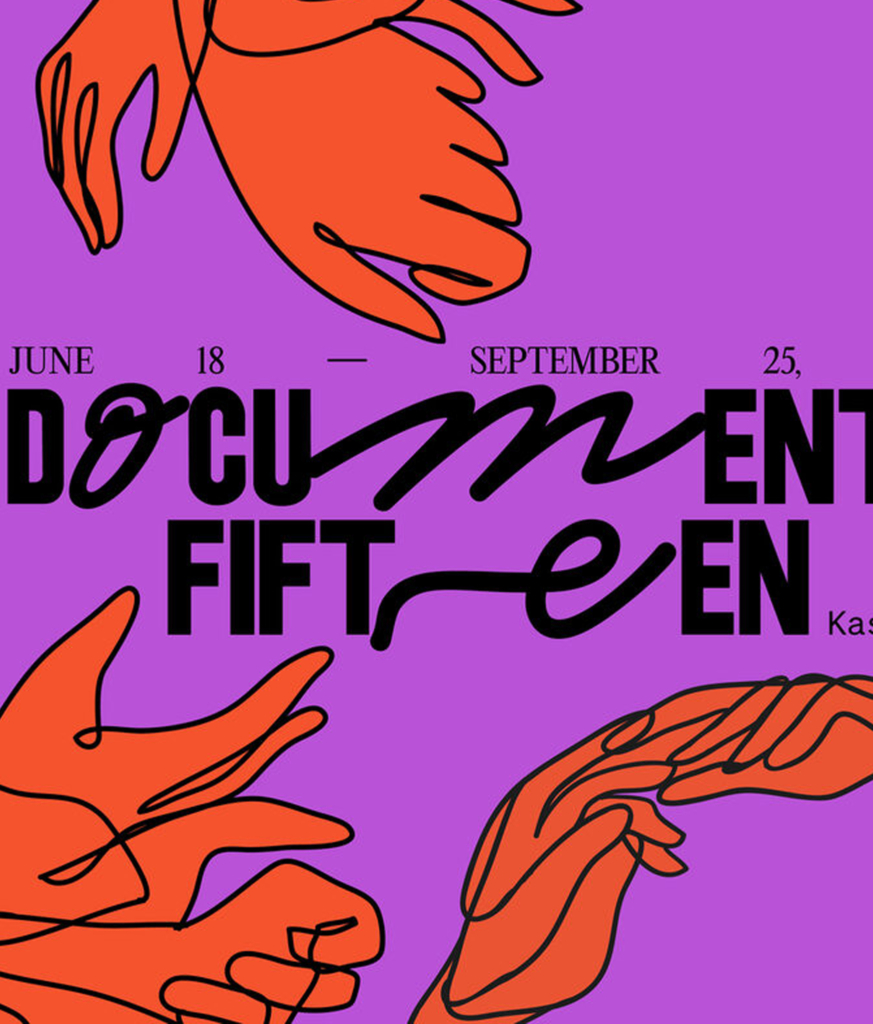
Kunstuitstap
16–18.09.2022
Documenta Fifteen
Kunstuitstap
16–18.09.2022
Ook deze editie van Documenta plannen we een driedaagse uitstap met de bus naar Kassel om de verschillende locaties te bezoeken. We kijken er enorm naar uit om er weer een fijn weekend van te maken!
Programma*
- 16.09.22: Busreis richting Kassel met korte tussenstop, aankomst hotel, bezoek Documenta
- 17.09.22: gezamenlijke bezoeken en vrije momenten
- 18.09.22: Uitchecken hotel, bezoek Documenta, busreis richting Limburg met korte tussenstop
* Meer details volgen binnenkort
PRAKTISCHE INFORMATIE:
Ledenprijs per persoon
- 420 euro voor een tweepersoons kamer (‘double’ of ‘twin’)
- 550 euro voor een eenpersoons kamer
Prijs jonge leden per persoon
- 380 euro per persoon voor een tweepersoons kamer (‘double’ of ‘twin’)
Prijs niet-leden per persoon
- 470 euro voor een tweepersoonskamer kamer (‘double’ of ‘twin’)
- 600 euro voor een eenpersoons kamer
In de deelnameprijs zitten: de busreis, 2 overnachtingen met ontbijt, een annulerings- en bijstandsverzekering inbegrepen. Wat zit niet in de prijs inbegrepen: persoonlijke uitgaven, maaltijden, drank, etc., het Entreegeld voor Documenta (deze boeken we ter plaatse zodat iedereen het reductietarief kan aanschaffen waar hij/zij/hen recht op heeft).
HOE RESERVEREN?
Stuur ons voor 24 juli een mailtje naar info@jester.be met als onderwerp: Kunstuitstap KASSEL. In je mail vermeld je zeker het aantal deelnemers, ieders namen, contactgegevens, facturatiegegevens, jullie gewenste kamertype en welke deelnemers er wel/niet lid zijn bij ons. Let op! Je inschrijving is pas compleet na overschrijving van een voorschot van €100 euro per deelnemer naar BE44 132 4360639 45. vermelding: KASSEL+naam + aantal deelnemers (aantal leden)+ kamertype.
Zodra wij de overschrijving hebben ontvangen krijgt u een bevestigingsmailtje van ons. De eerste week van augustus volgt dan de factuur* en uitgebreide details over de reis. Indien we niet voldoende deelnemers hebben voor de uitstap moeten we helaas de uitstap annuleren. Jullie voorschot wordt in de eerste week van augustus teruggestort.
* Om onze administratie niet te belasten verkiezen wij graag één factuur per groepsreservatie, natuurlijk is het altijd mogelijk afzonderlijke facturen aan te vragen.

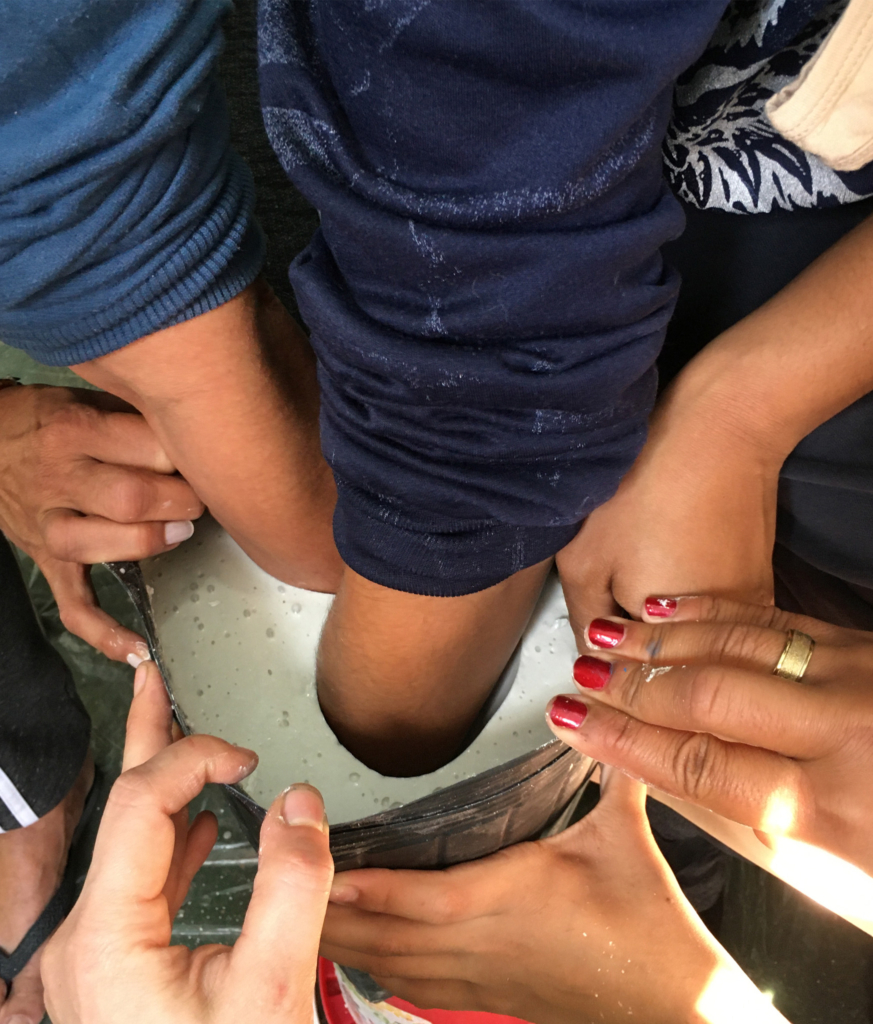
The Memory-Lab Pavilion
10.09–16.10.2022
Erica Ferrari & Ana Catarina Mousinho
The Memory-Lab Pavilion
10.09–16.10.2022
The Memory-Lab Pavilion (het herinnerings-laboratorium paviljoen) van Erica Ferrari en Ana Catarina Mousinho is een kunstinstallatie op de C-mine waaraan je kan deelnemen. Het functioneert als kunstenaarswerkplaats, ontmoetingsplek en tentoonstellingsruimte. Het paviljoen is een werk in ontwikkeling waar gedurende vijf weken, het duo een serie workshops organiseert en deelnemers uitnodigt de installatie gezamenlijk vorm te geven.
Erica Ferrari’s werk bestaat uit sculpturen, installaties en stedelijke interventies, die de wisselwerking tussen politiek en herinnering in de publieke ruimte bekijken. Voor haar project in Genk nodigde ze Ana Catarina Mousinho uit om het Memory-Lab Pavilion te ontwikkelen, als ruimte voor werk dat ingaat op de belichaming van gezamenlijke herinnering. Tijdens de werkperiode bij Jester werden de kunstenaars geïntrigeerd door het stedelijke- en herinneringslandschap van Genk. Gedurende de laatste twee eeuwen transformeerde de stad van een dorp waar landschapsschilders heenkomen naar een industrieel centrum en later naar de huidige postindustriële culturele site. Elk van deze transformaties bracht een zekere graad van uitwissen met zich mee en een verlies van herinneringen. Via het project willen de kunstenaars ruimte maken juist voor de herinneringen en verhalen die weinig zichtbaar zijn in de publieke ruimte. ‘Het recht op herinnering is het recht op publieke ruimte’, zeggen ze. In contrast met officiële narratieven die in monumenten of rituelen zijn gegoten, zullen Ferrari en Mousinho verkennen wat het potentieel is van gezamenlijke actie en efemere gebaren, als strategie voor herinnering en het vertellen van verhalen.
De deelnemers aan de workshops worden uitgenodigd om te verkennen hoe herinneringen en verhalen overgedragen kunnen worden door lichamelijke en materiële gebaren. De kunstenaars zullen de deelnemers introduceren in verschillende gebarende teken- en beeldhouwtechnieken, daarbij gebruikmakend van natuurlijke materialen als klei en houtskool en materialen die we kennen van bouwplaatsen, zoals gips, beton en bouwafval. De focus van de workshop gaat niet om een fysieke uitkomst maar meer om het proces van het samen creëren, het uitwisselen van verhalen en het vormen van nieuwe herinneringen.
De installatie is ontworpen door Ferrari en is aan de ene kant geïnspireerd door de infrastructuur van de bouwplaats en aan de andere kant door het idee van het paviljoen als semi-permanente, flexibele structuur. Het paviljoen staat op de voormalige site van de Winterslag Mijn, op een plek die een palimpsest is. Terwijl de monumentale gevel van het Energiegebouw en nog een paar anderen zijn behouden, is het merendeel van de infrastructuur van de voormalige mijn afgebroken. Het is op deze locatie waar de toekomstige gebouwen van Jester zullen verrijzen. Tussen architecturale erfenis en bouwplaats, wordt het Memory-Lab Pavilion een ruimte voor onderhandeling tussen het verleden en de toekomst.
Praktische informatie
De installatie is gelegen op C-mine, achter het LUCA School of Art gebouw. Het onderste deel van de installatie is te allen tijde toegankelijk. Behandel alles wat je ziet met respect. De eerste verdieping is alleen tijdens de workshops toegankelijk.
De openbare workshops vinden plaats op drie zaterdagen: 24.09, 01.10, 15.10, 2022. Tussen 13.00 en 16.00 uur. Op deze dagen kan je deelnemen aan de workshops of kan je langskomen om de kunstenaars te ontmoeten. De objecten die worden gemaakt tijdens het proces zullen ter plekke blijven tot het einde van het project, waarna de maker het object mee kan ophalen.
Biografie
Erica Ferrari (°1981, BR) is een kunstenaar en onderzoeker die vanuit Sao Paulo werkt. In de afgelopen jaren produceerde Erica objecten en installaties die verbonden waren aan onderzoek naar de relatie tussen architectuur, ruimte en geschiedenis. Ze nam deel aan solo en groepstentoonstellingen in Brazilie en internationaal en ontving awards en ondersteuning. Recente tentoonstellingen ‘32nd Biennial of Graphic Arts’ MGLC, in Ljubljana, Slovenia, ‘O que não é floresta é prisão política’, Reocupa Gallery of Ocupação 9 de Julho – MSTC in São Paulo, ‘Has always been dystopia’, XPO Gallery, in Enschede, Holland, ‘Estamos Aqui – Ocupação Ateliê 397’, SESC Pinheiros. São Paulo e ‘37º Panorama da Arte Brasileira’, MAM – Modern Art Museum of São Paulo, Brazil. Ze was artist in resident bij Pivô (São Paulo), Sculpture Space in Utica (New York), GlogauAIR (Berlin), ARE Holland (Netherlands), AIR Niederösterreich (Krems, Austria) and Jester (Genk, Belgium). Ze is een PhD student aan de School of Architecture and Urbanism of University of São Paulo (FAU USP). onderzoeker en verbonden aan LabOUTROS – Laboratory of the Department of History of Architecture and Aesthetics of FAU USP. Ze werkt samen met MSTC – Movement of Low Income Workers of São Paulo City Center.
Ana Catarina Mousinho (°1980, BR) is een beeldend kunstenaar, leraar en activist. Geboren in Recife, Pernambuco, en wonend in Sao Paulo. Ze heeft solo en groepsshows gehad in Recife, São Paulo, Brasília en Frankfurt en residency programmas in Recifi, São Paulo en Brasilia.
Hartelijk dank aan Alicja, Orlando Maaike, Luuk, Stef, Kevin en het hele Jester team,. Giselle Beiguelman en FAU/CAPES, Carmen Silva en MSTC en de beide families en vrienden voor hun support.

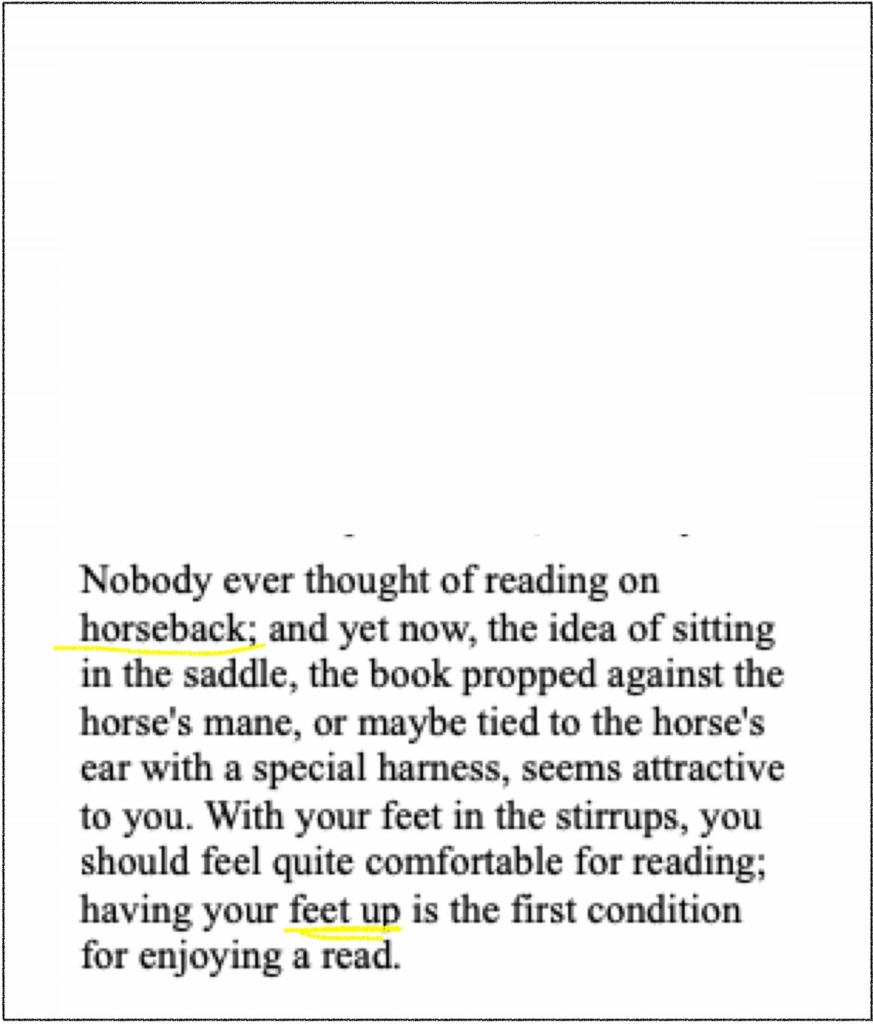
Riding High in the Reading Saddle
16–23.07.2022
Reading Group
Riding High in the Reading Saddle
16–23.07.2022
Zaterdag 16.07, 18-20 uur
Woensdag 20.07, 18-20 uur
Zondag 24.07, 18-20 uur
In If on a winter’s night a traveler, een roman uit 1979, roept de Italiaanse schrijver Italo Calvino het beeld van een lezer te paard op en beweegt tegelijkertijd in twee parallelle werelden: de fysieke wereld en die van het boek. Deze ‘lezer-rijder’, in sterk contrast met een lezer staande aan een lessenaar, representeert een geëmancipeerd publiek dat de teugels in de hand nemend, het plot naar huis rijdt. Niet zonder reden refereert de tentoon- stellings-titel aan deze figuur. Alexis Gautier’s werkmethode kan worden vergeleken met ‘collectief fictie schrijven’ al is de uitkomst niet altijd literair.
Parallel aan de tentoonstelling Riding High in the Reading Saddle van Alexis Gautier, organiseren we een leesgroep die de roman van Italo Calvino als uitgangspunt neemt. Drie avonden lang verkennen we de mogelijkheden van non-lineaire storytelling, collectief lezen en gesitueerde geletterdheid (situated literacies). De workshop is een collectief engagement en wordt gemodereerd door Jester’s curator Alicja Melzacka.
De workshop vindt plaats in onze tentoonstellingsruimte en is gratis. De teksten zijn in het Engels, waardoor we de sessies in het Engels voeren (geen specifieke bekwaamheid vereist, we spreken ook Nederlands). Gelieve in te schrijven vóór 11 juli – het specifieke plan wordt aangepast aan het aantal deelnemers. Om je deelname te bevestigen stuur je een mailtje naar alicja@jester.be


Open studio
14–15.05.2022
Jester
Open studio
14–15.05.2022
In mei openen we onze atelierdeuren! Je kan bij ons een unieke blik werpen op de diverse ateliers die deel uitmaken van onze werking zoals het keramiekatelier, het metaalatelier of de digitale studio. Tijdens je bezoek krijg je een bijzondere inkijk in de werkmethodiek van onze huidige residerende kunstenaar Arjun Das (IN). Hij zal op beide dagen aanwezig zijn om meer over zijn uitzonderlijke houtsnijwerk te vertellen. In het keramiekatelier presenteren we het work in progress van Sarah van Sonsbeeck (NL).
Niet enkel onze residerende kunstenaars vinden hun weg in onze ateliers, ook vele andere kunstenaars en makers maken via verhuur gebruik van de diverse werkplekken. Wil je zelf aan de slag? Tijdens onze Open Studios, geven we een inkijk in ons aanbod en kun je met je praktische vragen terecht bij de aanwezige team-leden. Hiernaast presenteren we onze samenwerking met vzw Het Steger in de vorm van de community kitchen. Neem gerust een kijkje in het café en bestel er een bijzonder hapje en drankje.
PROGAMMA
Zaterdag 14 mei en zondag 15 mei, 13:00-17:00
Arjun Das – open studio
Arjun Das (IN) komt uit een familie van arbeidsmigranten die door India trokken op zoek naar werk. Tijdens zijn werkperiode wil hij in contact komen met arbeidsmigranten in Genk en hun verhalen omzetten in houtsnedes en ander werk. Hij gebruikt hiervoor voornamelijk gebruikte materialen, zoals afvalhout.
Sarah van Sonsbeeck- presentatie work in progress keramiekatelier
Sarah van Sonsbeeck (NL) heeft een interesse in monumenten en in het bijzonder ‘toevalsmonumenten’: objecten die door bepaalde gebeurtenissen een rol krijgen in het herinneren en herdenken. Zij stelt hierbij vragen als “Waarom veranderen monumenten niet als ons denken over belangrijke thema’s en historische gebeurtenissen wel verandert?”
Geactiveerd keramiek atelier
Gelijktijdig in het keramiekatelier gieten we de nieuwe Jester koffietassen in mallen en we nodigen een kunstenaar uit om de draaitafel te gebruiken.
vzw Het Steger -Community kitchen * alleen op zaterdag
In het café presenteren we onze samenwerking met vzw Het Steger. Neem gerust een kijkje en bestel er een bijzonder hapje en drankje in onze bijzondere community kitchen.
PRAKTISCHE INFORMATIE
Op zaterdag 14 en zondag 15 mei ontvangen we jullie tussen 13:00 en 17:00 uur. Toegang is uiteraard gratis. Locatie: Casino Modern, André Dumontlaan 2, 3600 Genk.




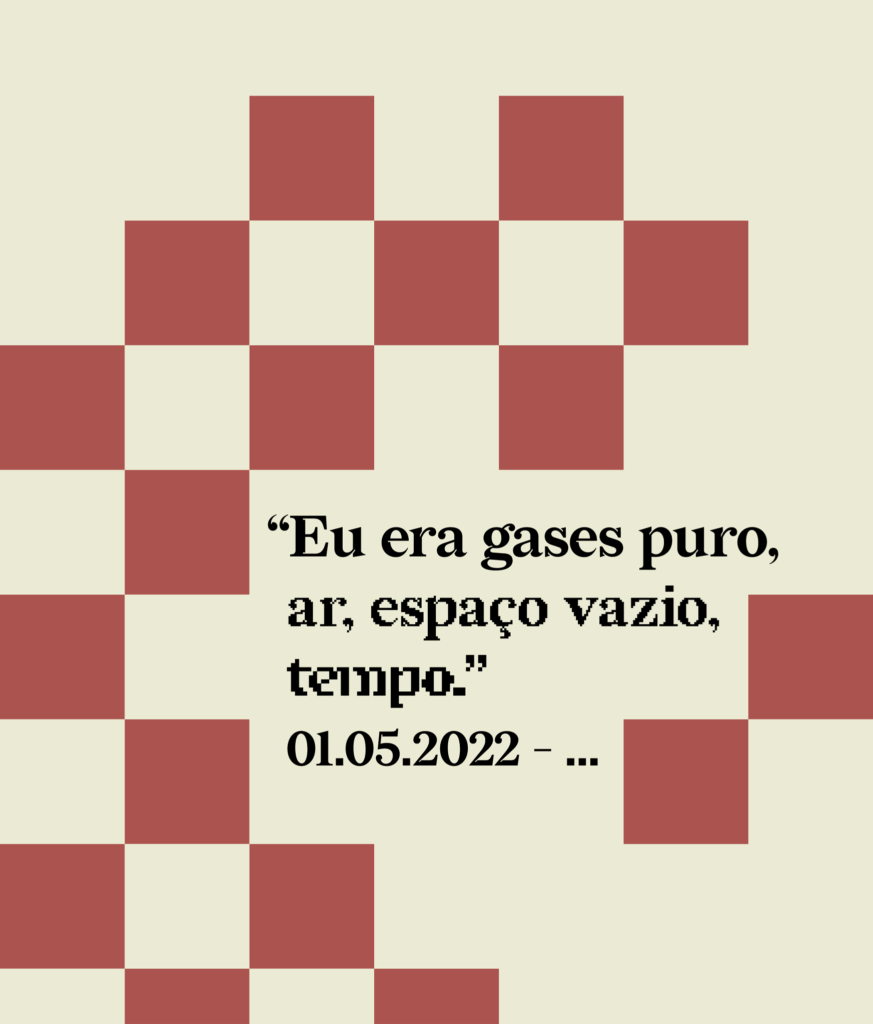
Editie Presentatie
01.05.2022
Three Tropes for Entropy
Editie Presentatie
01.05.2022
“Eu era gases puro, ar, espaço vazio, tempo.”
“I was pure gas, air, empty space, time.”
01.05.2022 – …
U bent van harte uitgenodigd op het derde en laatste evenement van Three Tropes for Entropy. De derde troop van de tentoonstelling krijgt vorm in een collectieve editie. De lancering vindt plaats in het atelier van Angyvir Padilla op zondag 1 mei, van 13 tot 19 uur.
De presentatie van de editie markeert de ontbinding van de transformatieve tentoonstelling, een resultaat van de Lichen Curatorial Prize 2021-22, georganiseerd door Jester (het voormalige FLACC/CIAP) en Curatorial Studies KASK. Dit laatste gebaar introduceert een onbepaaldheid in het tentoonstellingsproces, dat geen vaste einddatum heeft maar blijft voortbestaan in verschillende vormen, net zoals gasmoleculen die ooit zijn samengeperst in een gecondenseerde ruimte plotseling vrijkomen in de omgeving.
De gezamenlijke editie omvat drie gedrukte werken. Alle prints, gemaakt door Angyvir Padilla, mountaincutters en Daniel Steegmann Mangrané, komen voort uit de tekstuele praktijk die in de praktijk van de kunstenaars is ingebed:
Uitgevoerd in reflecterende, doorschijnende inkt en aangevuld met een handgemaakte lucifer die in het donker het reflectie-effect activeert, ontleent de zeefdruk van Angyvir Padilla verzen aan de poëzie van de Argentijnse schrijfster Alejandra Pizarnik.
De inkjet prints van mountaincutters werden in de tentoonstelling gepresenteerd – eerst in de expositieruimte van Jester en later verplaatst naar de C-mine compressoren hal voor de tweede troop van de tentoonstelling. Elke print draagt een uniek gedicht geschreven door het kunstenaarsduo en is aangevuld met magneten om het werk op te hangen.
De recto-verso zeefdruk van Daniel Steegmann Mangrané, uitgevoerd in grafietinkt, toont een fragment dat oorspronkelijk afkomstig is uit de mondelinge poëzie van Stella do Patrocínio, door haar gedefinieerd als gebabbel. Stella do Patrocínio, die verplicht werd opgenomen in een psychiatrische inrichting, maakte gedichten die nooit werden opgeschreven, maar die door de interpretatie van Steegmann Mangrané een visuele vorm kregen. Gespiegeld, schuin, gebroken en ingesneden, blijft de typografie doorschijnend en leeg – zo licht als ijle lucht, als gas, als de lege ruimte en tijd opgeroepen door de zelfbeschrijving van Stella do Patrocínio.
Alle zeefdrukken zijn prachtig gedrukt door Camping Penrose / Liselotte van Daele.
PRAKTISCHE INFORMATIE:
De editie presentatie vindt plaats in het atelier van Angyvir Padilla tijdens het 38ste Art Brussels weekend op zondag 1 mei van 13:00 tot 19:00 uur. U kunt ons bezoeken op volgende adres: Jennartstraat 46, 1080 Sint-Jans-Molenbeek, Brussel.
Lichen is een prijs voor opkomende curatoren, geïnitieerd door Jester (het voormalige FLACC/CIAP) en het departement Curatorial Studies van KASK School of Arts om curatoriële experimenten in België te ondersteunen. Met de steun van de Vlaamse overheid, de Stad Genk en de Jester leden.
Related Projects







